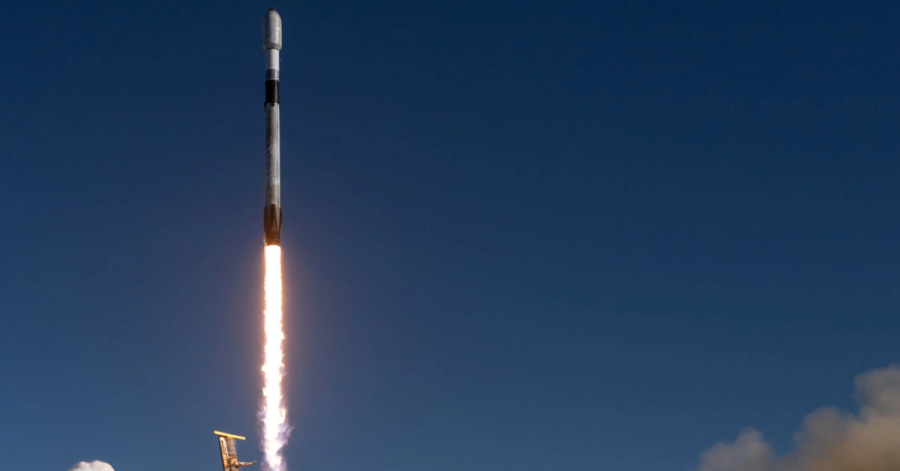This Tuesday (January 14) was an extraordinary day for the CEE space tech sector. The launch day for Bulgarian Endurosat nanosatellite took place, as well as Czech startup ZAITRA’s successful launch of several products into space. Both missions aboard SpaceX’s Falcon 9 rocket.
EnduroSat’s nanosatellite was launched at 21:09 EET time as part of the Balkan-1 mission into low-Earth orbit. The aim is to monitor the environment and manage natural resources through satellite data and services.
ZAITRA satellites aboard SpaceX’s Falcon 9 rocket during the Transporter-12 mission. Among the deployed satellites is Czech’s TROLL from TRL Space. Its main goal is to better detect illegal landfills, construction sites, deforestation, pollution of watercourses, and also gain a tool for precise monitoring of vegetation.
Bulgarian EnduroSat is becoming one of the world leaders in the space tech
EnduroSat is a company that designs and engineers spacecraft for business applications and space exploration missions. One of the fastest-growing Bulgarian microsatellite manufacturers globally and a key player in Bulgaria’s space industry was established in 2015 by Raycho Raychev and Stanimir Gantchev.
The Nikola Vaptsarov Naval Academy in Varna, hosting the new practice-focused Master’s Program in Space Engineering and Technology, organized an event at its Planetarium to witness the launch of the EnduroSat Balkan-1 mission in the Star Hall.
“We started in a 25-square-metre attic in Sofia, and back then, everyone laughed at us. In the past ten years, EnduroSat has become one of the leaders in the sector. We serve over 350 clients worldwide, have delivered more than 100 satellites to customers, and launched over 60 into orbit,” shared Raycho Raychev, joining from the company’s office in Denver, Colorado, EnduroSat CEO and founder.
The company explained that Balkan-1 is EnduroSat’s mission focused on high-resolution multispectral imaging for Earth observation. The mission will supply images with a 1.5-meter resolution for the European Commission’s Copernicus program, a comprehensive Earth observation program. It provides satellite data and services to monitor the environment and manage natural resources. It offers information on climate change, land use, agriculture, forestry, marine environments, and disaster management.
“Last year alone, we launched more satellites than the entire space programme of all Balkan countries put together, which is a strong testament to our success. I am proud that all these satellites were designed and developed in Bulgaria, are largely operated by Bulgarians, and serve the entire world,” said Raychev.
EnduroSat is planning to gradually create a constellation of 120 Balkan satellites, which will provide much broader Earth observation capabilities, explained Raychev, who previously created a space education program in Bulgaria called “Space Challenges”.
Czech Republic leads with hyperspectral satellite troll for advanced earth and space analysis
The Czech Republic has become one among the few countries with its own satellite equipped with a hyperspectral camera, an advanced imaging tool, named TROLL. This enables detailed analysis of various materials, surfaces, and phenomena on Earth and in space, including land use, vegetation, mineral composition, atmospheric monitoring, and even space exploration.
As well as a hyperspectral camera, TROLL satellite is also equipped with advanced artificial intelligence software developed by its sister startup ZAITRA.
Czech-based SpaceTech startup ZAITRA specializes in developing solutions for satellite autonomy. It aims to serve both institutional and private clients in the space industry. The company supports satellite operators by using AI-powered filtering to deliver more accurate and relevant data. According to their information, ZAITRA was one of the first companies to successfully deploy AI in operational nanosatellites.
“In addition to the aforementioned cooperation with the Czech Environmental Inspectorate, this year we are preparing a unique research project together with Charles University, the University of Heidelberg and the University of Milan, through which hyperspectral images from the TROLL satellite should help not only to identify supraglacial lakes in Greenland or Antarctica, but especially to monitor indicators that may cause their rupture. Indeed, more than 15 million people living in glacial areas are currently at risk from water from these lakes. The expedition, in which the partners will conduct on-site surveys in addition to satellite imagery, is planned for June this year,” said Petr Kapoun, representative of TRL Space, a company which stands behind TROLLS’s development.








